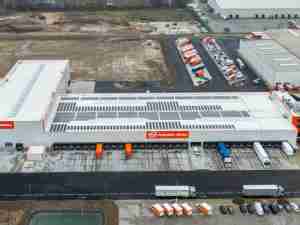In the Danish harbor town of Kalundborg, a storage yard for shipping containers that opened last year has quickly become among the Nordic country’s busiest and a towering example of how the war in Ukraine is grinding the gears of global trade.
Sanctions, both voluntary and government-mandated, have forced companies to halt shipments bound for Russia until they decide where to store or redirect the goods. It’s one of the reasons why European port congestion has worsened since Russia’s Feb. 24 invasion.
In Denmark, a proud shipping nation that’s home to the world’s No. 2 container line, the sudden need for a logistics solution forced A.P. Moller Maersk A/S to temporarily rent extra space and triple its container terminal in the small town that’s a 90-minute drive west of Copenhagen.
Russia’s invasion in Ukraine and new Covid-19 lockdowns in China have caused new supply chain woes, and disruptions are set to persist into the second part of the year, Maersk said on Tuesday.
The speed at which the logjam of Russian cargo formed is best symbolized in Kalundborg.
On Wednesday, the 200,000-square-meter (656,000-square-foot) terminal held 8,000 containers—full of items like food and industrial materials that won’t be going to Russia. That’s enough to fill a medium-size container ship.
On other days the terminal looks a bit deserted with all the extra rented space, as Maersk’s clients gradually re-sell the goods and ship them off to new markets.
In this staging area of stranded international commerce, there’s also the risk of literally getting bogged down. Maersk hasn’t been able to build proper infrastructure at the site yet, so trucks hauling the containers drive over large metal plates on top of dirt roads so they don’t get stuck in the mud.









